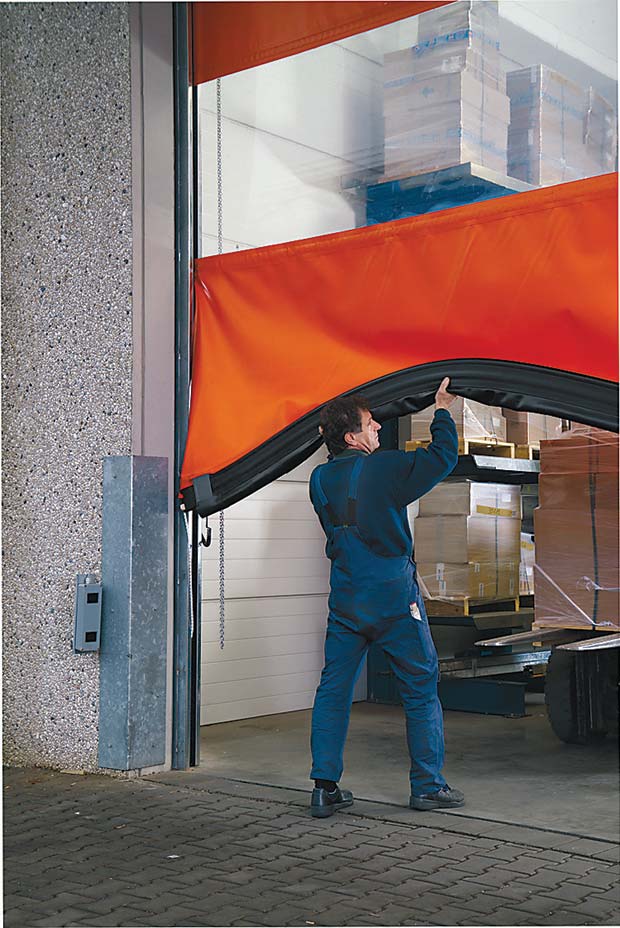Manufacturing downtime costs British manufacturers more than £180 billion a year due to lost productivity*. For warehouses in particular, it’s crucial to a business’ success and bottom line that their loading bays are fully operational at all times. Here Phil Clark, Industrial Service Manager at Hörmann UK, discusses the importance of regular servicing and how comprehensive after sales and technical support from a trusted brand can significantly reduce costly downtime for businesses.

Manufacturing downtime caused by a machine fault or damage due to misuse or an accident can have significant implications for a company’s bottom line. Minimising the risk of damage to goods, and most importantly, reducing the risk of injury to employees and external staff, can initially be achieved through the installation of safe and innovative solutions, but must be supported through regular servicing by competent and accessible engineers.
Whilst all loading technology must comply to EN Safety Standards: EN1398, manufacturers of loading bays and dock levellers, along with the company or building owner, have a shared level of responsibility to ensure the loading area is working correctly and efficiently. The Safety At Work Regulations do not dictate a set number of times a loading bay must be serviced, however, here at Hörmann UK we recommend all loading technology is serviced at least twice a year, or more frequently if it is a high useage area.
For regular bi-annum servicing, manufacturers should complete a comprehensive check regime, not just visual, as this will not unearth any potential issues in the technology itself. At Hörmann UK, our service engineers have 30-40 different areas they must analyse as part of the service, to ensure every single aspect of the system is functioning correctly.
Once the checks are complete, the service engineer should then provide a list of recommendations or improvements that could be made to increase the functionality and safety of the technology. This is most applicable where a service engineer has been called to a warehousing unit due to an accident that has caused damage to the loading area.
Damage is most commonly caused by vehicles driving into doors, container lorries driving into single trailers and the general use of incorrect vehicles within these spaces. The incorrect specification of buffers and misuse of the doors are also areas that can cause repetitive damage to the loading areas. In this instance, the service engineer should provide guidance and advice on how to reduce this type of damage from occurring, subsequently minimising the cost of repair, by recommending the installation of additional protection systems, such as radar sensors.
They should also provide relevant and up-to date information on how the loading bay operations can be adapted to reduce the risk of downtime, workplace accidents or potential damage to goods. If there is a certain type of damage occurring frequently, the service engineers should suggest altering the system, such as changing the height or width of the loading area, to prevent this type of damage from happening in the future.
To ensure a warehouse can be back to full operations as quickly as possible, service engineers must be as reactive as the client requires, attending a property within two to four hours of a fault or accident initially occurring. This is why our servicing team has doubled over the last year, with our trained and readily available engineers currently working across a nationwide network to support existing clients and nonclients in the event of an accident or fault.
Whilst availability of engineers is key, it must be supported by a first time fix ratio where the servicing team keeps maintenance consumables on their van at all times, whilst the warehousing site itself has a critical spares holding. This can significantly increase the responsiveness of the repair, as the most vital and cumbersome parts are already on site at the warehousing unit and do not have to be externally ordered in by the servicing department.
This is extremely useful for warehousing and distributors who frequently use the loading bay systems and need them working at full capacity as quickly as possible. As an OEM, Hörmann UK is able to offer competitive replacements for parts, even if the loading bay system is not one of our own. This enables us to offer competitive replacements on functions such as hydraulic pumps and operators, whilst still ensuring the technology will be compliant with relevant building regulations.
Specifying the correct loading technology is vital to ensure operations are optimised at all times. However, the regular and adequate servicing of this technology is just as important to ensure site safety and overall productivity and should never be overlooked by the warehousing staff or the manufacturer of the loading technology.
For further information on Hörmann UK’s servicing department and loading technology, call 01530 516850 or visit: www.hormann.co.uk/industrycommerce- and-publicauthorities/ service.
- The Staggering Cost of Machine Downtime Report, Oneserve, 2017
HÖRMANN UK
Tel: 01530 516850




Comments are closed.